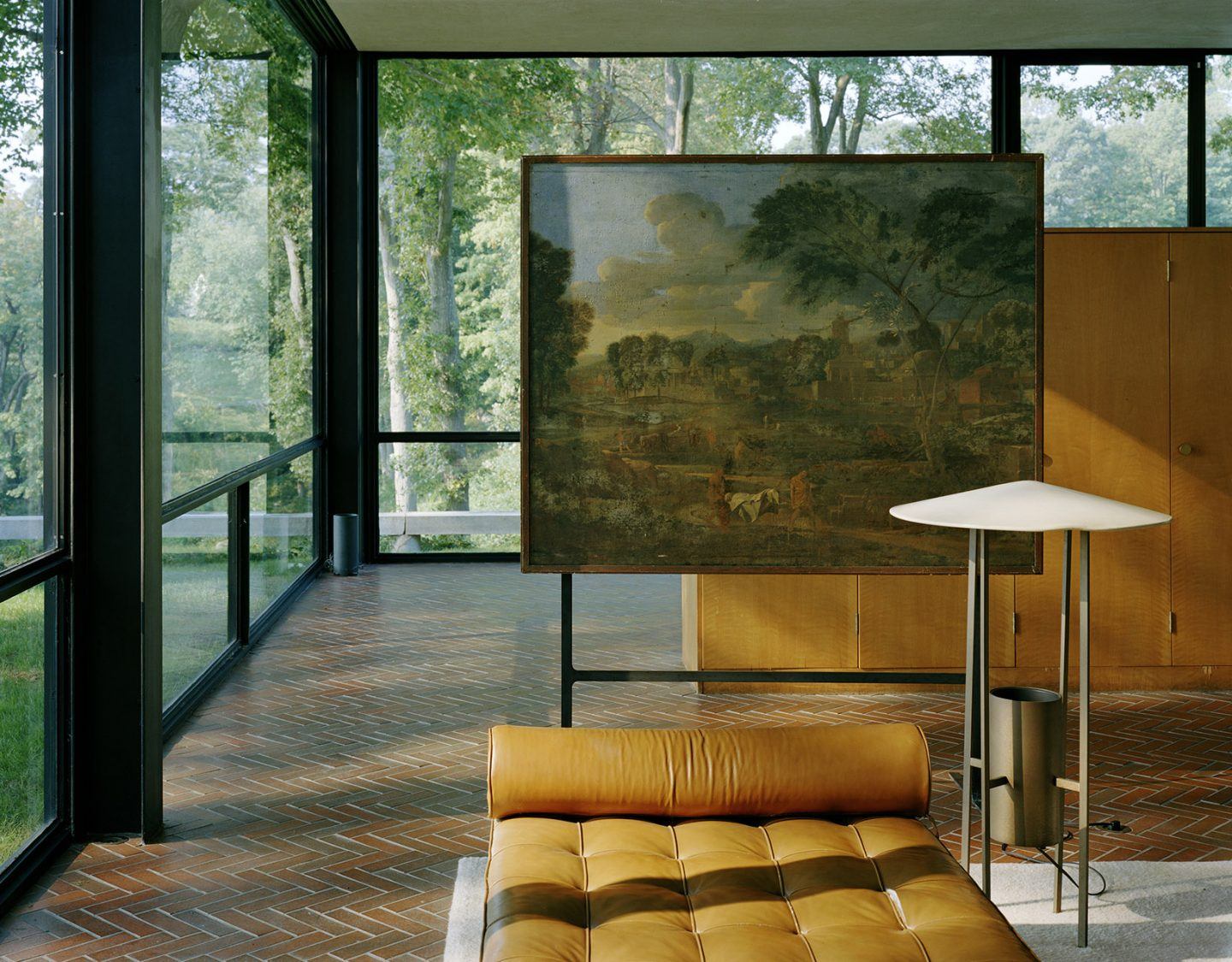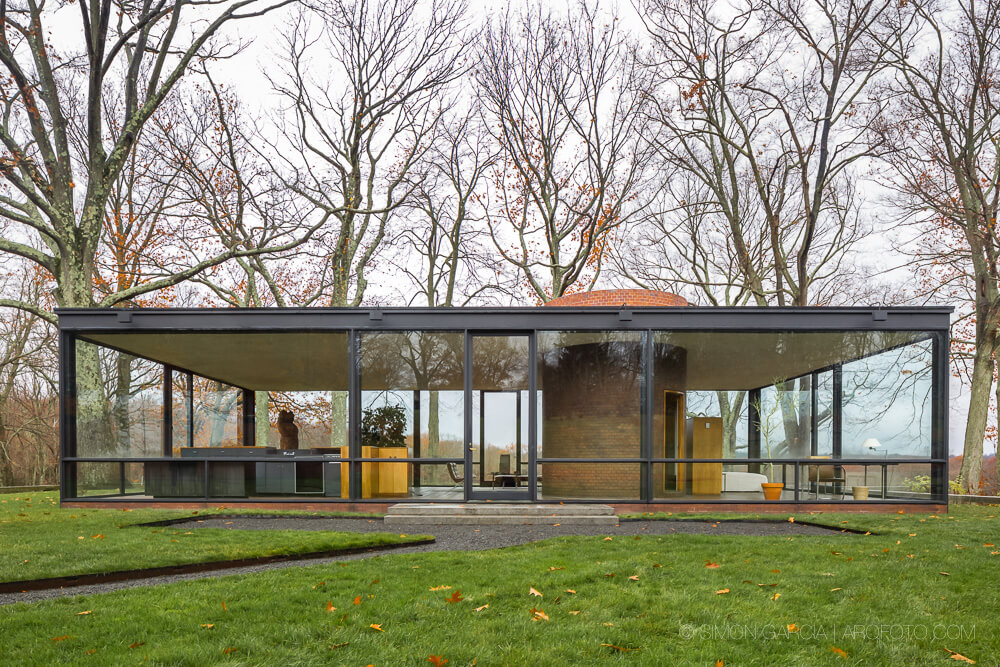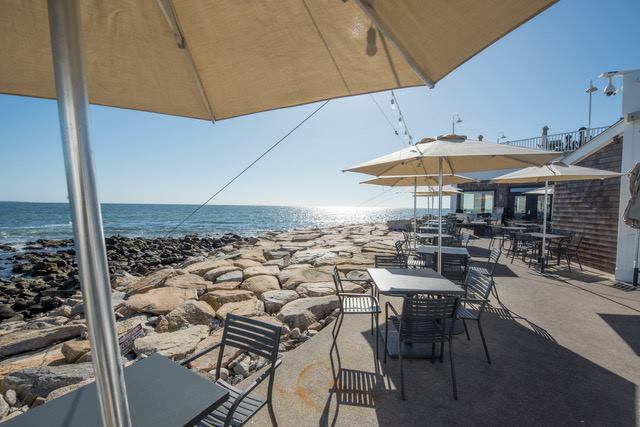Table Of Content

On one side, the Glass House, transparent and entirely self-possessed, a work of modernist daring framed in steel and inspired, as Johnson was only too happy to admit, by the designs of his hero, the German architect Ludwig Mies van der Rohe. On the other, the Brick House, sometimes called the Guest House, hiding behind its inscrutable exterior the bedroom Johnson called his “sex room,” as well as the mechanical equipment serving its more glamorous relative 105 feet away. Inspired by Mies van der Rohe’s Farnsworth House, the New Canaan residence has a glass exterior and lacks interior walls, a significant departure from traditional house design. Johnson’s work as an architect and critic popularized International Style modernism in the United States, and his Glass House is recognized as one of the masterworks of modern American architecture.
Philip Johnson Glass House Exhibition

This cylinder houses the bathroom on one side and a fireplace on the other. The Glass House harmonizes with the surrounding landscape, which the architect described as his “wallpaper.” Johnson’s desk in front of the bed overlooks the east side of the property. The lawn behind the building, which features Harry Bertoia chairs, yields expansive views over an artificial pond and pavilion, which Johnson added in 1962.
What Philip Johnson's Glass House Says About the Architect
14 Beautiful Glass Houses Around the World - Architectural Digest
14 Beautiful Glass Houses Around the World.
Posted: Tue, 07 Nov 2023 08:00:00 GMT [source]
He would go on to Harvard for an undergraduate degree in philosophy and classics ( ) and then graduate studies in architecture ( ). In 1942 he built a house for himself in Cambridge, Massachusetts based on the ideas of Walter Gropius and Ludwig Mies van der Rohe and upon graduation in 1943 served in the US Army during WWII ( ). The Visitor Center functions as a ticket office, so check in when you arrive. There's also a bathroom there, and lockers in case you want to stash any excess baggage. The gift shop is more of a design store, with items like a Zaha Hadid cheese grater, a gold-plated Slinky, and a paperweight in the shape of Johnson's signature chunky eyeglasses. Note that there is no public parking at Glass House itself, nor at the Visitor Center, and all touring guests must enter the grounds via this shuttle.
Can You Build a House Out of Paper? Shigeru Ban Says Yes.
Shigeru Ban: The Paper Log House opens at The Glass House with the help of Cooper Union architecture students - Archinect
Shigeru Ban: The Paper Log House opens at The Glass House with the help of Cooper Union architecture students.
Posted: Wed, 17 Apr 2024 07:00:00 GMT [source]
The house was the first of fourteen structures that the architect built on the property over a span of fifty years. Upon arrival at the Glass House, visitors will immediately encounter Day’s reinterpretation of Da Monsta. Responding to Philip Johnson’s statement that “the building is alive,” Day boldly casts a series of massive red nets across its undulating volume, capturing and staking Da Monsta to the ground. After entering Da Monsta, visitors first see individual sculptures by Day, including Spinneret (a study for Spidey Striptease), 2008; Wet Net, 2009; Pollinator, 2011; and Bandage Dress (white with chain), 2012. Once viewers enter the second gallery, they encounter a dramatic, site-specific installation that explores the expressive contours of Da Monsta with a deconstructed Herve Leger Bandage dress deployed as an architectural element.
The Glass House, built between 1949 and 1995 by architect Philip Johnson, is a historic site of the National Trust for Historic Preservation located in New Canaan, CT. The pastoral 49-acre landscape comprises the midcentury modern Glass House (1949) as well as fourteen structures- follies, outdoor sculptures and more, and features a permanent collection of 20th-century painting and sculpture. The campus serves as a catalyst for the preservation and interpretation of modern architecture, lart, and andscape, and a canvas for inspiration and experimentation. The tour season runs from April through November and advance reservations are required. The pastoral 49-acre landscape comprises fourteen structures, including the Glass House (1949), and features a permanent collection of renowned 20th century painting and sculpture, along with temporary exhibitions. The campus serves as a catalyst for the preservation and interpretation of modern architecture, landscape, and art; and a canvas for inspiration and experimentation.
Educators will be available across the site to provide information and answer questions. Visitors on self-guided tour days will have access to The Glass House, Painting Gallery, Sculpture Gallery, Studio, Pavilion in the Pond, Monument to Lincoln Kirstein and both upper and lower landscapes. This option will include the newly restored interior of the Brick House beginning on May 2, 2024. Picnicking, professional photography, tripods, and easels are not permitted. Johnson emphasized what he called “procession.” Different vistas, follies, buildings, and artworks, such as the large concrete sculpture by Donald Judd towards the end of the driveway, are slowly revealed while walking through the property. What started with the Glass House has become an entire park with several noteworthy buildings that are all part of Johnson’s vision for his New Canaan estate.

Johnson’s partner in these endeavours (1967–91) was the architect John Henry Burgee. The structure gained Johnson recognition in both architectural and popular circles, including features in Life magazine and New York Times Magazine. Michael Sorkin described Johnson as having a talent for publicity, setting him apart as the leader of the Modernist style. The Painting Gallery is underground, built into a landscaped hill, and was modeled after a tomb Johnson saw in Mycenae, Greece. The interior design is clever, with rotating walls in the three circular rooms that can be manually turned to reveal a whole different set of paintings. This was also Johnson's space for entertaining, and long tables would be carried in for what we imagine were extravagant, raucous dinner parties.
In its middle age as in its youth, the Brick House stood mutely by, its feet brushed by a spotlight on the Glass House that never fully turned its way. Philip Johnson’s Glass House, built atop a dramatic hill on a rolling 47-acre estate in New Canaan, Connecticut, is a piece of architecture famous the world over not for what it includes, but for what it leaves out. The dwelling’s transparency and ruthless economy are meant to challenge nearly every conventional definition of domesticity. Declared a National Historic Landmark in 1997, the Glass House is still considered a modern marvel.
As a museum trustee he continued to advise the Department of Architecture and Design for many decades. Throughout his career in architecture he continued to support The Museum of Modern Art, supplying so many works of art he was widely considered the second largest donor to the museum in terms of number of works during his lifetime. The Glass House is a renowned architectural landmark designed by Philip Johnson, located in New Canaan, Connecticut. Its innovative use of glass and seamless integration into the landscape has made it one of the most iconic buildings in American residential architecture. The house, measuring 55 feet by 33 feet and covering 1,815 square feet, sits on a promontory overlooking a pond and the woods beyond, invisible from the road.
Or, it could have had something to do with the glass house he lived in for much of his life. The guesthouse sits as a smaller counterpoint to the main glasshouse and is constructed from red bricks. The Guest House (Brick House) was remodelled in 1953, but contains a bedroom, reading room and bathroom connected by a narrow corridor.
Inspired by Mies van der Rohe's Farnsworth House, the Glass House’s exterior walls are made of glass with no interior walls, a radical departure from houses of the time. The art gallery is buried underground in order to not take away attention from the house, making it windowless which is uncommon for a gallery. Wright's other notable experiment on the site included a sculpture gallery which is "an assymmetrical white-brick shed with a glass roof...conceived as a series of interlocking rooms that step down around an open, central space." Although the house is the primary attraction on the site, Johnson used the expansive land around it to allow his imagination to run and build thirteen more structures that include a guest house, an art gallery, and a sculpture pavilion.
Guest curator Jordan Stein organized this unfolding sculpture exhibition, held in the same spot where Giacometti’s Night once stood, over the course of three years. On display for three to six months at a time, the individual works presented in Night (1947 – 2015) each “disappear” after their run, making room for new works and new absences. Tours of the entire property are available and begin from the visitor’s center in downtown New Canaan. Those interested in Johnson’s influences should check out the similarly-designed Farnsworth House in Plano, Illinois, that is also constructed of mostly steel and glass.
Notable among these is the 79-foot-tall Cardboard Cathedral erected in 2013, which has become a permanent landmark. “Historic preservation is not just the physical conservation of buildings and collections, but also the preservation of intangible qualities or the spirit of a place. My hope is to reanimate the Glass House as a curatorial laboratory to complement Johnson’s and Whitney’s work.

No comments:
Post a Comment